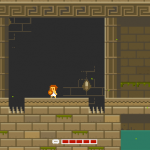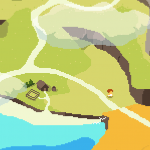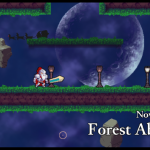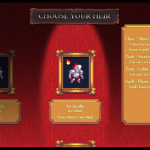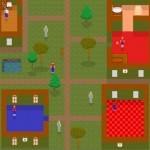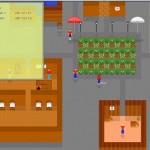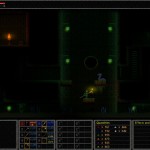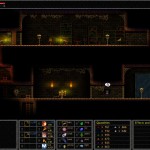Interview with Keith Burgun
I hadn’t posted about Auro yet, in part because I wasn’t entirely clear what the deal was with the game. At first, I simply thought it wasn’t coming out, as it had a failed Kickstarter–but then it came back again and succeeded not long afterwards. But I still wasn’t totally clear on what Auro was. It looked to me like a roguelike, but it used hexes, and nowhere did the developers themselves ever actually refer to it with the word “roguelike.”
What is this thing, anyway? I wondered. After a bit of digging, I took it upon myself to get in touch with Dinofarm Games developer Keith Burgun and find out. The interview follows.
For those who don’t know you, please introduce yourself and tell me how you got into game development.
My name is Keith Burgun, I’m a game developer from Westchester, NY. I’ve been working on games ever since I can remember, really, but I got really serious about doing it as a career when I got the opportunity to do 100 Rogues. I’d say that the iOS App Store really is one of the things that spurred me to get into game development. The other thing is that since about 2006 I’ve been writing for various blogs on the topic of game design, and I feel like I really have something special to contribute in this arena. This is in contrast to say, music composition, which despite the fact that I feel very competent at it (I studied composition in college, it’s what I’m actually trained in), I don’t feel like I have as much to contribute, probably because there has already been such a rich and developed history of music. Games are new, and I feel like I can make a much bigger impact.
You put out 100 Rogues not that long ago. Are you satisfied with that game (creatively, commercially, etc.)?
Yes, I’d say so. Creatively, I’m quite proud of 100 Rogues. Of course if I could do it again today I would do many things differently, which certainly any creative person would say about anything they made 5 years ago. But, I really think the spirit of 100 Rogues is really charming and attractive, despite a lot of flaws. Commercially, I’m also quite satisfied with how it went. That’s not to say that I personally made much money from it, but simply that it really did for me what it was supposed to, which is show the world that my lead artist, Blake Reynolds and I know how to make a fun and attractive game. Because we made 100 Rogues, we were able to make AURO, so that’s a success in and of itself.
AURO’s original working title was actually “The Roguelike” – this was sometime in 2011. At that time, I originally wanted the game to be the “most pure” expression of the Roguelike genre. Unfortunately, what I discovered is that Roguelike games are actually such a convoluted mess of a number of conflicting “core mechanisms”, and you can’t simply boil them down. What I realized is that I’d have to take just one of these large core mechanisms and focus hard on that, if I wanted to create an elegant design.
I chose “tactics” as the core mechanism: positioning yourself against arrangements of monsters in a favorable way. Once I decided that, though, a cascade of other issues started to pop up. What do “items” have to do with tactics, really? What about stats? I was also making some really huge realizations about game design during this process too, particularly due to my exposure to designer European boardgames, much of which is documented in my book. For instance, I’ve realized that if you have a skill-based game, having your tool (your avatar) grow in power during the game is actually quite often a bad idea. The player is getting better at the game, so why does his tool also become better? It makes balancing vastly harder and I can’t see why — it seems to me to be one of the vestigial elements from D&D that has just sort of stuck with us. AURO is now almost finished, and I’m happy to say that it really is just a pure tactics game, and I’m really excited to get it out there.






